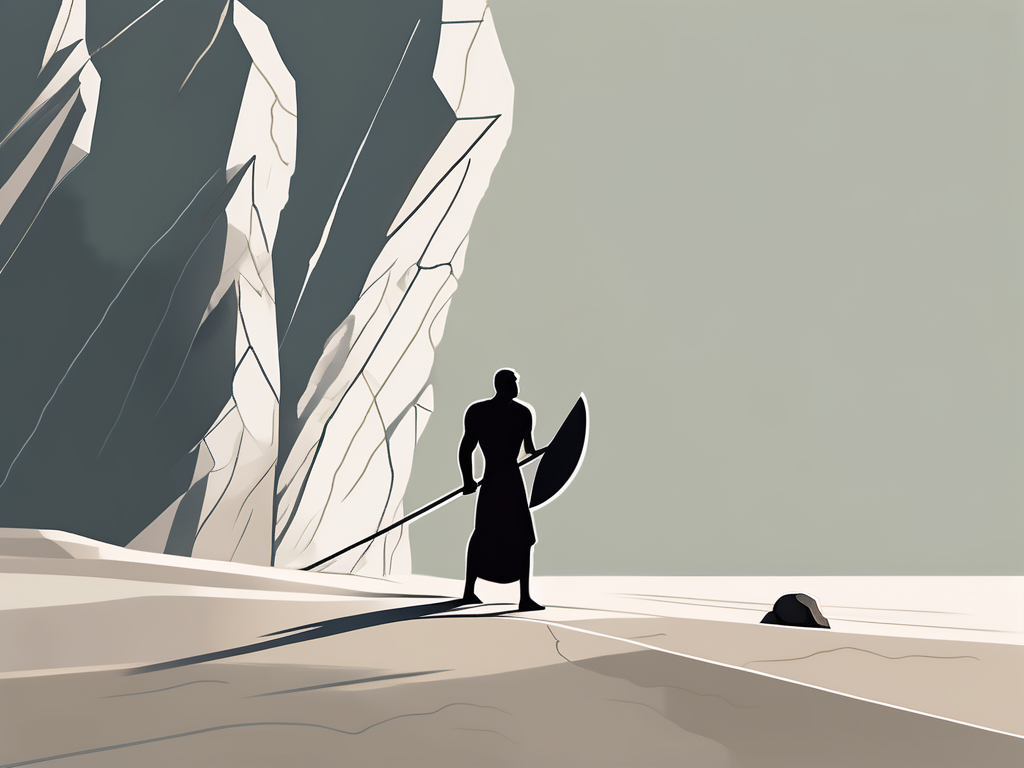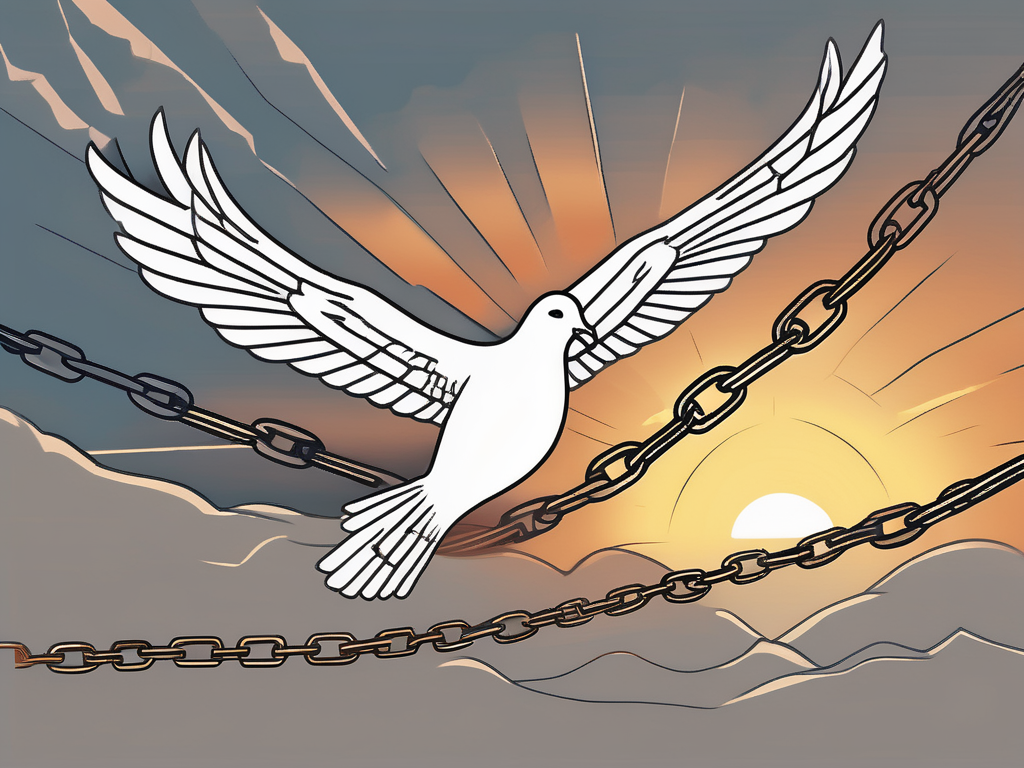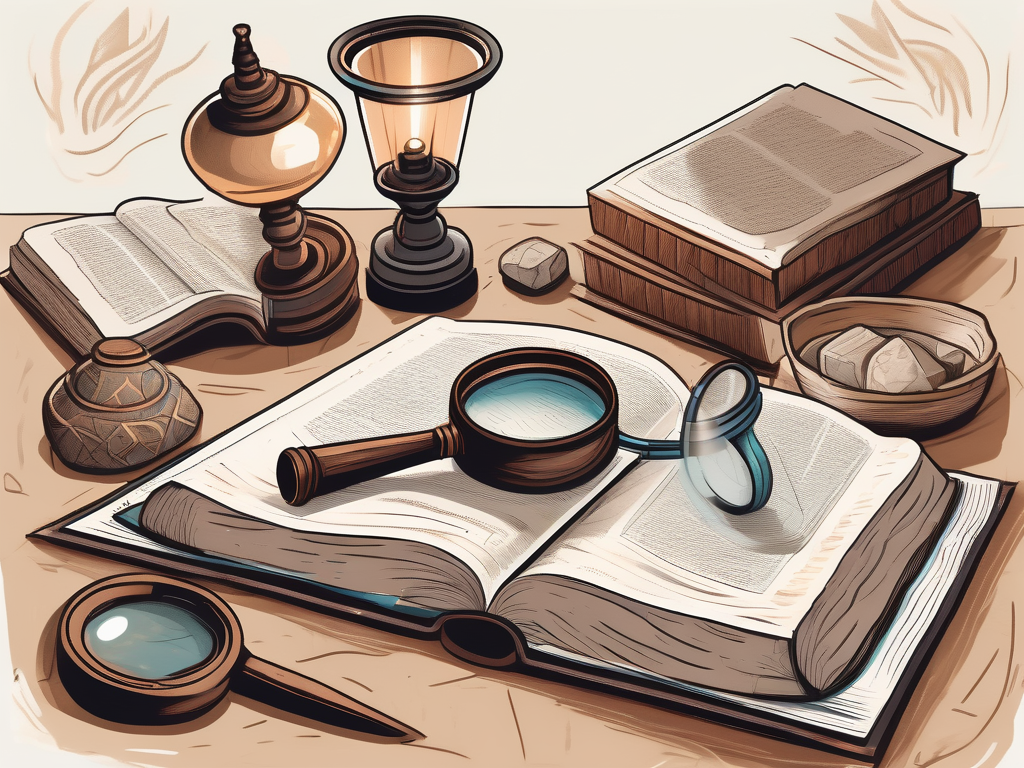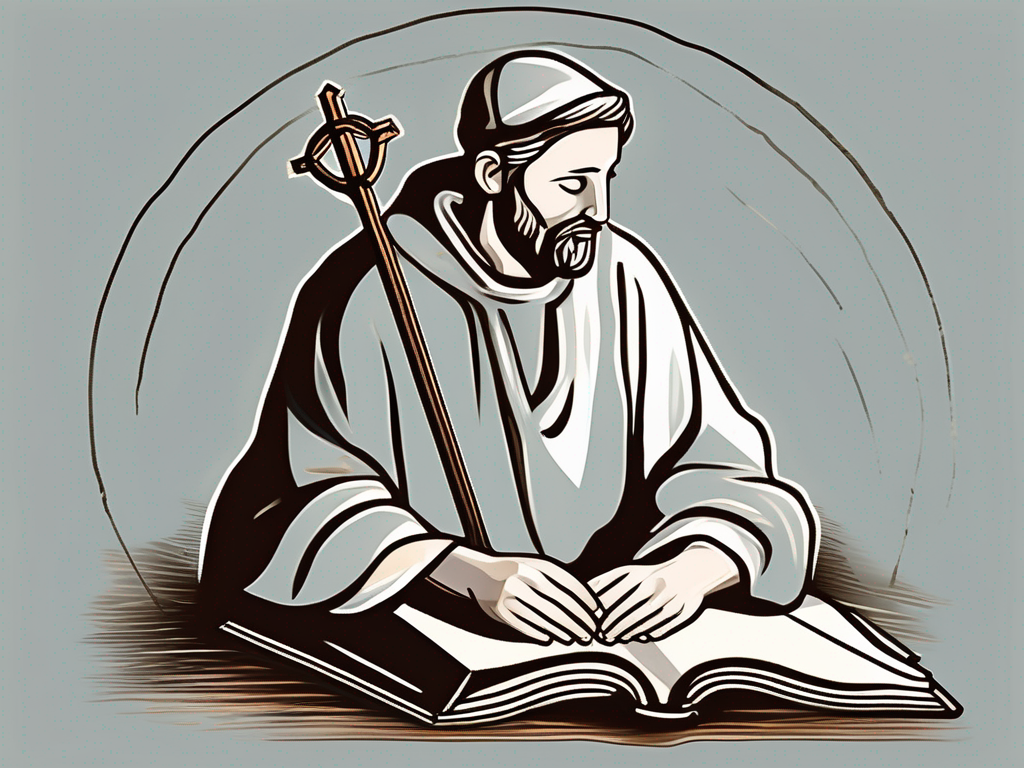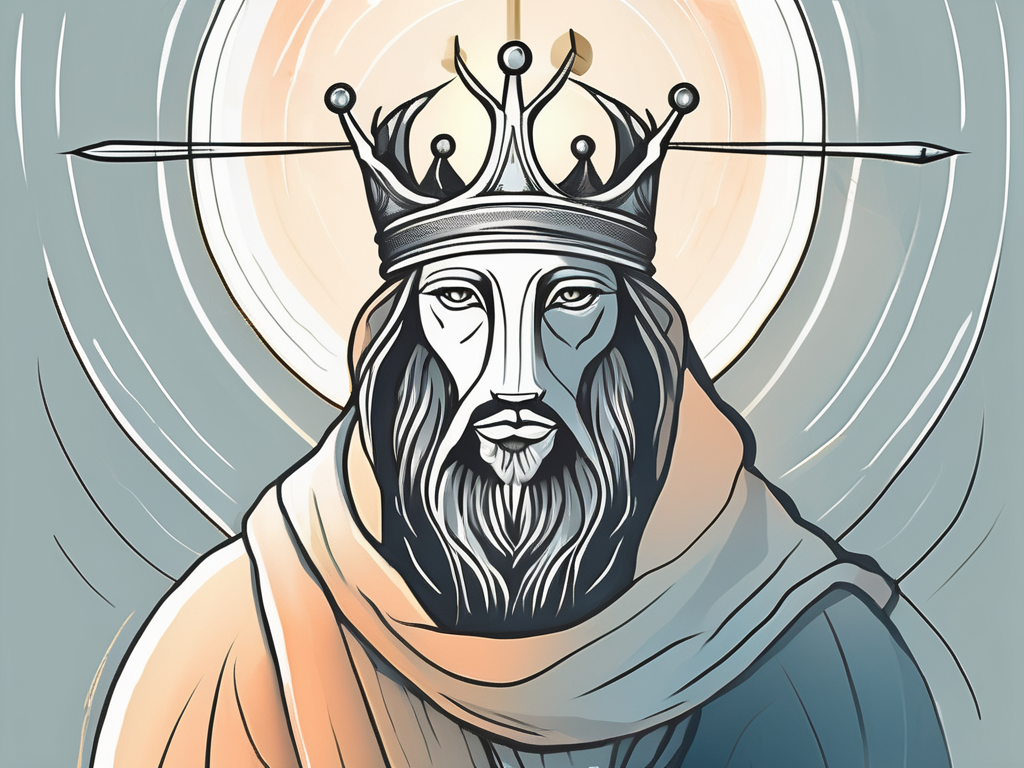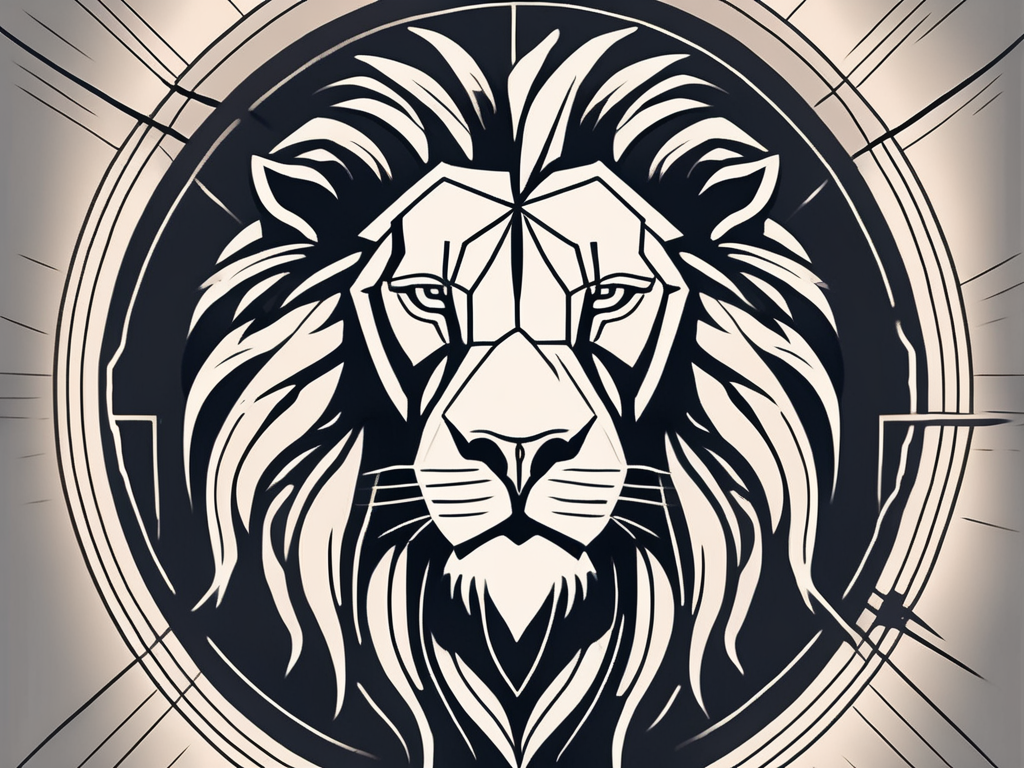In the annals of history, few tales captivate and inspire quite like the legendary story of David and Goliath. This timeless narrative of a young shepherd boy facing off against a fearsome giant has transcended time and culture, leaving an indelible mark on our collective imagination. To truly appreciate the magnitude of this epic tale, it is vital to understand its historical context, delve into the captivating characters, witness the extraordinary battle, and unravel the profound symbolism embedded within the story.
Understanding the Historical Context
The Time Period of David and Goliath
The events of David and Goliath transpired during the ancient biblical era, specifically around the 10th century BCE. This was a tumultuous time in the region, marked by political strife, religious conflicts, and territorial disputes. The stage was set for a remarkable clash between two rival factions: the Israelites and the Philistines.
As we delve deeper into the historical context, it is important to note that the 10th century BCE was a time of great change and upheaval. The Israelites, who had recently settled in the land of Canaan, were still establishing their presence and consolidating their power. The Philistines, on the other hand, were a formidable force, known for their advanced military tactics and technological prowess.
During this period, the Israelites faced numerous challenges, both internal and external. Internally, they were grappling with issues of leadership and governance. The Israelites were living under the rule of a series of judges, who acted as both political and religious leaders. These judges, chosen by divine intervention, provided guidance and protection to the Israelites in their quest for stability.
The Political Landscape
Meanwhile, the Philistines, a powerful civilization originating from present-day Mediterranean coast, sought to expand their territory. With their advanced weaponry and strategic alliances, they posed a significant threat to the Israelites. Bound by a long-standing animosity, the Israelites and the Philistines stood at the brink of a monumental showdown.
The political landscape of the time was complex and multifaceted. The Israelites, though united by their faith in Yahweh, their one true God, were divided into twelve tribes, each with their own unique customs and traditions. This internal fragmentation often hindered their ability to present a united front against external threats.
On the other hand, the Philistines were a centralized and highly organized civilization. They had established a confederation of five city-states, known as the Philistine Pentapolis, which included Gaza, Ashkelon, Ashdod, Ekron, and Gath. This confederation allowed them to pool their resources and coordinate their military campaigns effectively.
The Role of Religion in the Tale
Religion played a significant role in the tale of David and Goliath. The Israelites worshiped Yahweh, their one true God, who had made a covenant with them and promised to protect and guide them. This monotheistic belief system set them apart from the polytheistic practices of the surrounding nations, including the Philistines.
The clash of belief systems further fueled the animosity between the two nations. The Philistines revered a pantheon of gods, each associated with different aspects of life and nature. Their religious practices were deeply ingrained in their society, influencing their worldview and guiding their actions.
It is within this volatile landscape that our hero, David, emerged as an unexpected champion of his people. His unwavering faith in Yahweh, combined with his courage and resourcefulness, allowed him to overcome seemingly insurmountable odds and become a symbol of hope for the Israelites.
As we continue to explore the historical context of David and Goliath, we gain a deeper understanding of the complexities and challenges faced by the Israelites and the Philistines. The clash of political ambitions, religious beliefs, and societal structures created a perfect storm that would forever be etched in history as the legendary battle between David and Goliath.
The Characters: David and Goliath
David: The Shepherd Boy
David, the son of Jesse, was a mere shepherd boy when the tale unfolds. Although he possessed no formal training in warfare, his courage, resourcefulness, and unwavering faith in God set him apart. His affinity for playing the lyre and composing psalms mesmerized those around him, imbuing him with an air of mystique.
As a shepherd, David spent his days tending to his flock, protecting them from predators and leading them to lush pastures. He honed his skills with the sling, using it to ward off any threats that dared to approach his beloved sheep. This experience taught him patience, precision, and the ability to remain calm in the face of danger.
David’s deep connection with nature fueled his creativity and spiritual growth. In the quiet solitude of the fields, he found solace and inspiration, pouring his heart into the melodies he played on his lyre. His music had a profound effect on those who heard it, soothing troubled souls and lifting spirits.
Goliath: The Philistine Giant
On the opposing side stood the formidable Goliath, a mighty warrior known for his towering stature and his indomitable strength. Clad in impenetrable armor, armed with a colossal spear, and shielded by a reputation as an unparalleled champion, Goliath exuded an aura of invincibility. His presence struck fear into the hearts of the Israelites.
Goliath’s size and strength were unmatched, making him a fearsome adversary on the battlefield. His massive frame and powerful muscles instilled a sense of awe in those who beheld him. He had triumphed over countless opponents, leaving a trail of defeated warriors in his wake.
However, beneath Goliath’s imposing exterior lay a man driven by arrogance and a thirst for power. His belief in his own invulnerability blinded him to the possibility of defeat. This hubris would ultimately prove to be his downfall.
Other Key Characters in the Story
While the tale centers on David and Goliath, there are other significant characters who contribute to the narrative’s richness. Saul, the king of Israel, initially fails to recognize David’s potential but eventually aligns himself with the young hero. Joab, David’s loyal general and friend, demonstrates unwavering support throughout the trials and triumphs that lie ahead.
Saul, a man chosen by God to lead his people, finds himself torn between his duty as king and his personal insecurities. He struggles to comprehend the magnitude of David’s abilities and the divine favor bestowed upon him. Saul’s journey parallels David’s, as both men face internal conflicts and external challenges that test their character.
Joab, a skilled warrior and trusted confidant, becomes David’s right-hand man. His unwavering loyalty and strategic brilliance prove invaluable in the face of adversity. Joab’s unwavering support and unwavering support throughout the trials and triumphs that lie ahead serve as a testament to the power of friendship and camaraderie.
Together, these characters form a tapestry of strength, faith, and resilience. Their individual stories intertwine, shaping the narrative of David and Goliath into a timeless tale of triumph against all odds.
The Battle Between David and Goliath
The Build-Up to the Battle
As tensions escalated between the Israelites and the Philistines, both sides amassed their forces, preparing for the impending clash. The Philistines rallied behind Goliath, their champion, issuing a daunting challenge: a one-on-one duel to decide the victor. Tremors of anxiety swept through the Israelite camp as they contemplated the seemingly insurmountable odds. It is in this moment of uncertainty that David steps forward with unparalleled courage.
David, a young shepherd known for his musical talent and bravery, had been tending to his flock in the hills of Bethlehem when he heard of the Philistine’s challenge. Despite his humble background, David possessed an unwavering belief in the power of his faith and an unyielding determination to protect his people. With the weight of his nation’s hopes resting on his shoulders, David embarks on a journey that will forever change the course of history.
As David makes his way to the battlefield, the Israelite soldiers look on with a mix of admiration and skepticism. How could this young shepherd possibly defeat the mighty Goliath, a warrior renowned for his colossal strength and towering stature? Yet, there is something about David’s unwavering confidence and the glimmer of determination in his eyes that sparks a flicker of hope within their hearts.
The Battle Scene
The climactic battle between David and Goliath unfolds on the battlefield, with the Philistines watching in disbelief and the Israelites clinging to hope. Rejecting the conventional approach, David discards the imposing armor and weapons offered to him, choosing instead to rely on his a sling and five stones. With unmatched precision and unwavering faith, he hurls a stone, striking Goliath’s forehead, toppling the seemingly invincible giant.
The impact of David’s stone reverberates through the air, momentarily silencing the chaos of the battlefield. Time seems to stand still as Goliath, the mighty warrior who had instilled fear in the hearts of many, crashes to the ground. The Philistines, once filled with arrogance and confidence, are now consumed by shock and disbelief. The Israelites, witnessing this miraculous turn of events, erupt in jubilant cheers, their spirits lifted by the extraordinary display of courage and faith.
David, with his heart pounding and adrenaline coursing through his veins, stands tall amidst the chaos. He looks upon the fallen Goliath, a symbol of the seemingly insurmountable challenges that life presents, and realizes that he has achieved the impossible. In this moment, David’s victory is not just a triumph over a physical opponent, but a triumph over doubt, fear, and the limitations imposed by society.
The Aftermath and David’s Victory
David’s heroic triumph reverberates across the land, scattering the Philistine forces and instilling newfound hope in the hearts of the Israelites. The victory serves as a testament to the power of determination, faith, and unconventional strategies. David’s ascent from a lowly shepherd to a revered warrior and eventually a legendary king inspires generations to come.
News of David’s victory spreads like wildfire, reaching the far corners of the land. People from all walks of life are captivated by the tale of a young shepherd who defied the odds and emerged victorious against all expectations. David’s name becomes synonymous with bravery, resilience, and the unwavering belief that anything is possible.
Throughout history, the story of David and Goliath continues to serve as a reminder that greatness can come from the most unexpected places. It teaches us that true strength lies not in physical prowess alone, but in the courage to stand up against adversity, to challenge the status quo, and to believe in the power of our own abilities.
The Symbolism in the Tale of David and Goliath
The Underdog Triumphing Over the Powerful
At its core, the tale of David and Goliath stands as a timeless allegory of the underdog overcoming seemingly insurmountable odds. David, armed with nothing but a sling and sheer determination, triumphs over a formidable giant. This symbolism resonates with individuals facing their own giants in life, reminding them that greatness can emerge from the unlikeliest of places.
In this captivating story, David’s journey from a humble shepherd to a hero of biblical proportions serves as an inspiration to all who feel overshadowed by the powerful forces in their lives. As we delve deeper into the narrative, we discover the layers of significance that make this tale a testament to the triumph of the human spirit.
David’s unwavering faith in God is a recurring motif throughout the narrative. His conviction, coupled with his trust in divine providence, empowers him to face Goliath without fear. This poignant message inspires believers to confront their fears head-on, relying on faith as a steadfast anchor in times of adversity.
Faith Overcoming Fear
David’s unwavering faith in God serves as a guiding light in the darkness of uncertainty. It is through his unshakeable belief that he finds the courage to confront the towering giant before him. This powerful symbol of faith resonates with individuals from all walks of life, reminding them that even in the face of overwhelming fear, faith can provide the strength needed to overcome any obstacle.
As we immerse ourselves in the story, we witness the transformation of fear into triumph, as David’s faith propels him forward. It is a reminder that no matter how daunting the challenge may seem, faith has the power to transform the ordinary into the extraordinary.
The Use of Weapons and Armor in the Story
The decision of David to reject the traditional armor and weaponry and opt for a shepherd’s sling encapsulates the narrative’s essence. It speaks to the power of individuality, highlighting the potential contained within seemingly modest resources. The story encourages us to trust our unique strengths and talents, transcending conventional wisdom to achieve extraordinary outcomes.
David’s choice to rely on a simple sling instead of the conventional weapons of war showcases the importance of thinking outside the box. It teaches us that true strength lies not in the tools we possess, but in our ability to utilize them in innovative ways. This message resonates with individuals facing their own battles, reminding them that they possess the power to overcome obstacles by embracing their individuality and harnessing their unique skills.
As we delve into the epic tale of David and Goliath, we witness the convergence of history, faith, and human resilience. This captivating narrative continues to captivate audiences of all ages and backgrounds, reminding us of the boundless potential that lies within each one of us. Through the ages, David’s victory has echoed, serving as a beacon of hope, reminding us that even when faced with insurmountable odds, the smallest among us can achieve greatness.
David’s triumph over Goliath serves as a testament to the indomitable human spirit. It reminds us that no matter how insurmountable the odds may seem, with faith, determination, and the courage to embrace our unique strengths, we can conquer any giant that stands in our way. The tale of David and Goliath continues to inspire and empower individuals across generations, serving as a timeless reminder that greatness can emerge from the unlikeliest of places.
